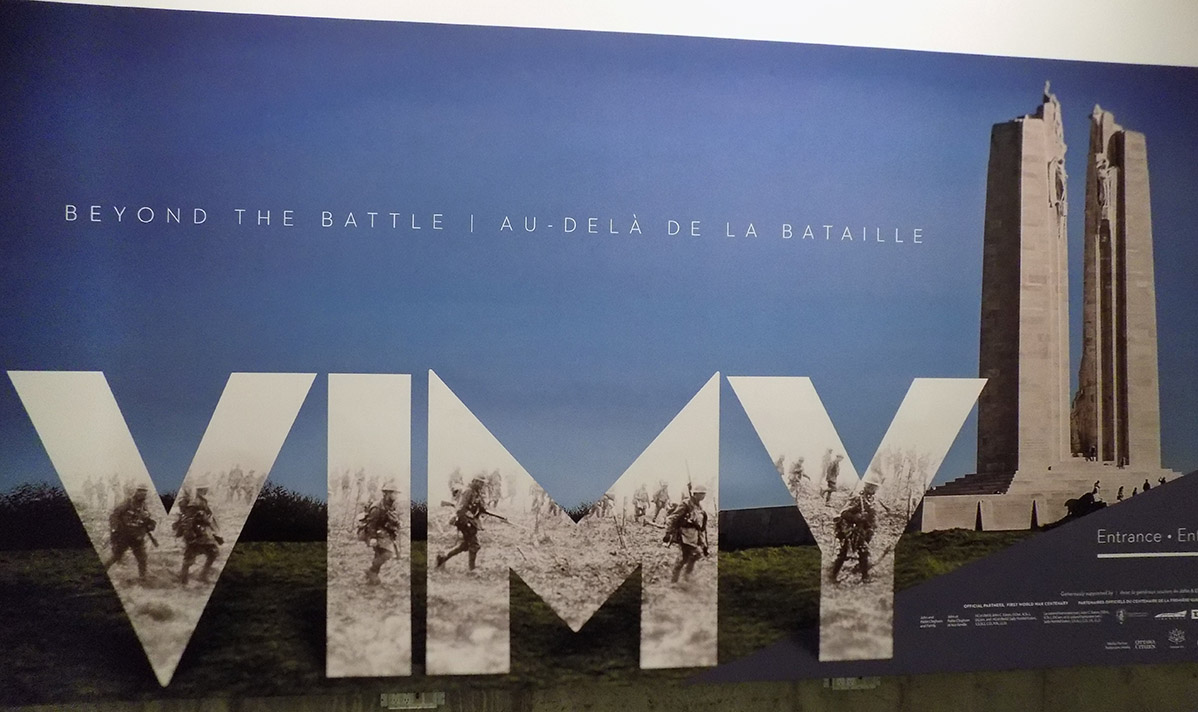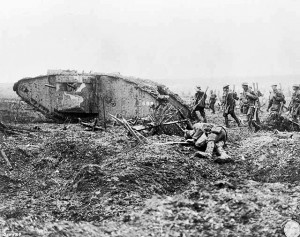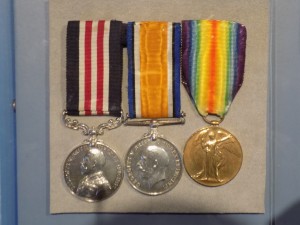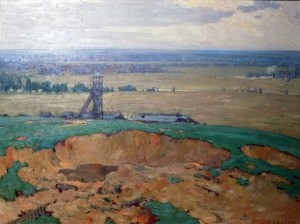Canada’s baptism of fire a century ago on Vimy Ridge

Entrance to the Vimy exhibit at the Canadian War Museum in Ottawa. The Vimy Memorial in France is shown at the right. Photo: James Morgan

2nd Canadian Division soldiers advance behind a tank at Vimy, April 1917. Photo: Library and Archives Canada
Military victories have a way of shaping a country. The 100th anniversary of the Battle of Vimy Ridge in World War I is being observed across Canada right now. The battle took place from April 9 to 12, 1917 in France and saw the Canadians capture the ridge from the Germans. Canada did not have an official army of its own yet. Soldiers fought in what was called the Canadian Corps, a sort of colonial branch of the British Army. At Vimy, all four divisions of the Canadian Corps fought together for the first time, making it the first military victory Canada could claim as entirely its own. Vimy also stood out as the largest territorial advance made by any allied army since the war began in 1914.
The battle was called a “birth of a nation” for Canada by Alexander Ross, a Brigadier-General who was there. The statement was never meant as a reference to American filmmaker D.W. Griffith’s racially-charged 1915 production of the same name. The birth of a nation description has stuck though, and has become the defining phrase of the Vimy legacy.
Military historian Jack Granatstein wrote in his book Canada’s Army that Vimy has become the pinnacle of Canadian military achievement and the subject of mythology. The battle scene is often described as one of Canadians ascending a steep ridge under heavy enemy fire. Granatstein however writes that the steep part of the ridge was on the opposite side, behind German lines toward the village of Vimy. The side of the ridge the Canadians ascended was more of a gradual slope. Daniel Pellerin, a recent PhD graduate in History from the University of Ottawa who specializes in military history says Canada actually had British artillery support at Vimy, too.
Pellerin says that like any military victory in any country, Canadians often focus on some details of Vimy more than others. He says the mythologizing that has developed around the battle’s legacy hasn’t led to any incorrect facts being taught or presented about it, but that the popularized version of the story is oversimplified. Pellerin notes that the battle took place at a time when the war was not going well and a victory was a big boost for national morale. The battle also happened on the Monday after Easter, so it took on a quasi-religious symbolism of sacrifice for many Canadians.

The World War I medals of Sergeant Masumi Mitsui, a Japanese-Canadian soldier who fought at Vimy Ridge. Sadly, Mitsui was interned with thousands of other Japanese-Canadians during World War II. He refused to wear the medals again until the 1980s. Photo: James Morgan
The 100th anniversary of the Battle of Vimy Ridge is getting a lot of attention. A special exhibit is on right now at the Canadian War Museum in Ottawa. It features the people, places, and details surrounding the event. The exhibit includes the medals of some of the most decorated soldiers who fought at Vimy. Perhaps more importantly though for those of us living a century later who are less familiar with World War I, there is a strong focus on commemoration, especially surrounding the large Vimy Memorial that stands on the ridge in France which officially opened in July 1936. Thousands of Canadians have travelled to France for the anniversary, including two of my cousins. Daniel Pellerin says that Canadians tend to somberly commemorate, rather than celebrate past military victories, and that’s why much of what is taking place to honor what happened at Vimy Ridge emphasizes not just the victory, but also the considerable cost of human suffering in achieving it. The Canadian Corps suffered 10,602 casualties in the battle: 3,598 killed and 7,004 wounded.
Tags: Battle of Vimy Ridge, canada, history, World War I










Honor to the brave dead, for doing their duty. Condemnation to the leaders that started an unnecessary war with stupid alliances, creating a domino effect to drag all Europe into it. Cursed be the fuddled-minded generals who spent the lives of an entire generation sending them to charge across broken ground against machine guns and artillery with bayonets. The same generals who played war in the safety of the chateaus, drinking champagne while their troops lived in water-filled trenches among the corpses and the rats.
“It is well that war is so terrible–we would grow too fond of it” Robert E. Lee